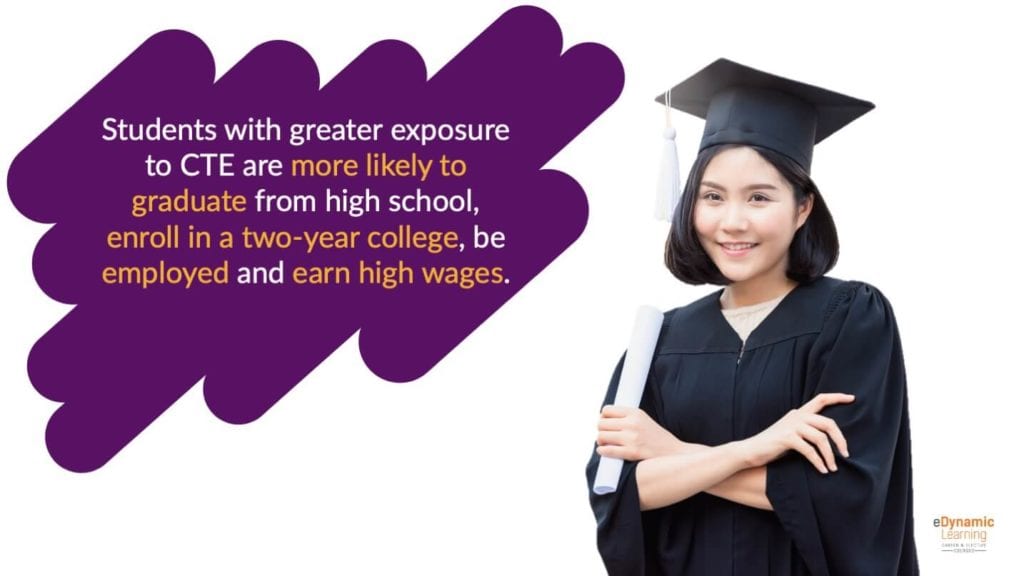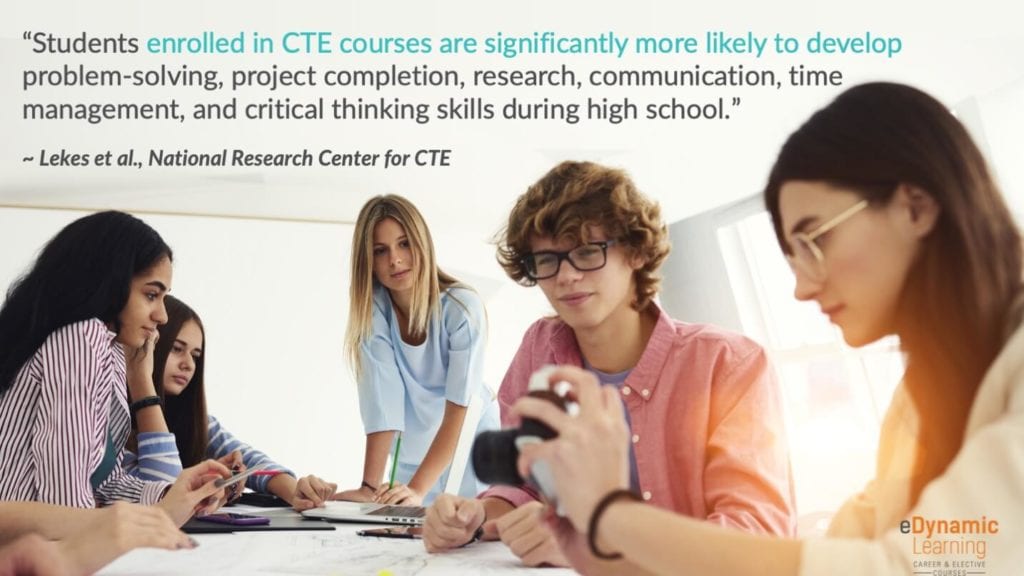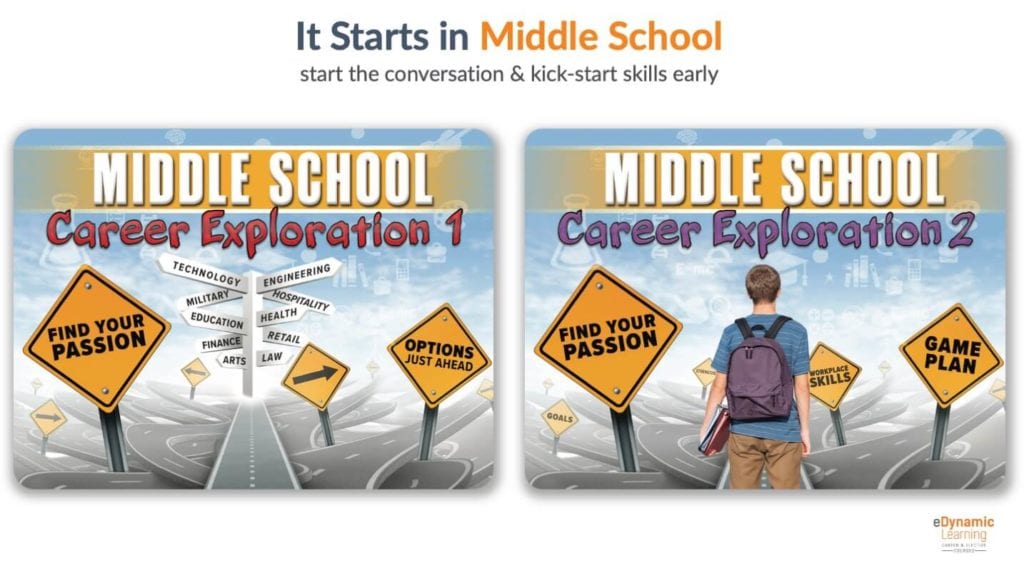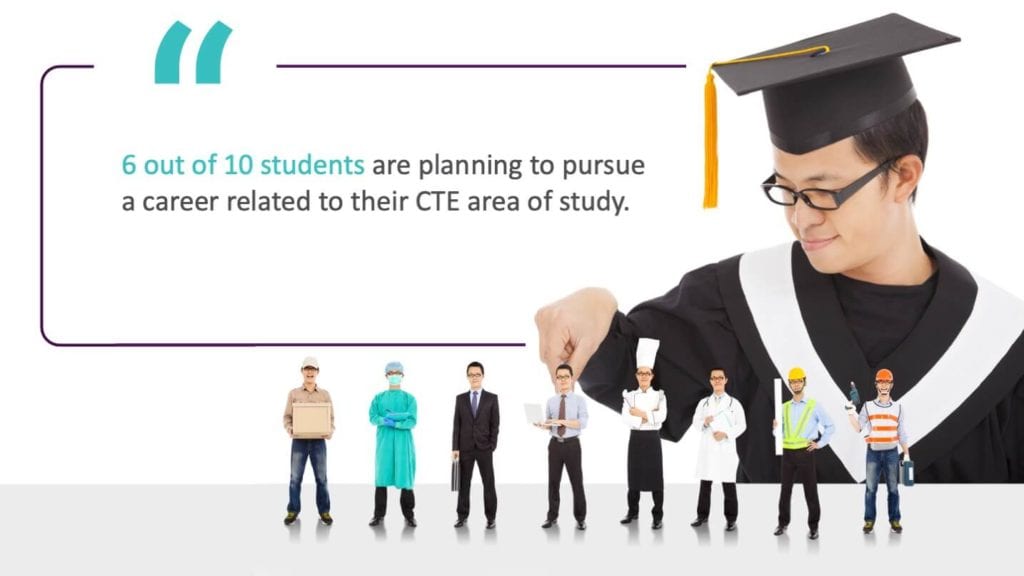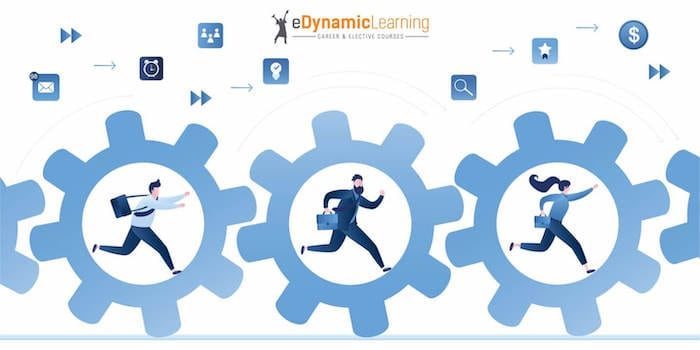
6 Reasons Why CTE Is So Important
February 22, 2021Career and Technical Education (CTE) has always played an important role in secondary education and has increased in popularity. Did you know that the first ideation of a CTE-like law was introduced in 1917 with the passage of the Smith-Hughes Act? Providing students with vocational (“vo-tech”) education was, and still is, proven to support students in preparing for the workforce.
As teachers, we can all agree that core curriculum areas are extremely important for our students. I think we can also all agree that not all of our students will be able to identify a possible career path, interest, or skill set needed for the job market through core courses.
- How do they learn what careers may be available to them, especially in their local communities?
- Do they immediately go into the workforce or pursue higher education post-high school graduation? And if the latter, how do they know what their college career focus should be in?
CTE and workplace readiness programs benefit all students, and helps them gain employability skills, technical knowledge, and the training they need to thrive in today’s – and tomorrow’s – workforce.
Let’s explore six reasons why CTE is so important.
1. CTE Leads to Higher Graduation Rates
Before COVID-19 even entered the learning landscape, 7,000 students a day were dropping out of school. That’s a total of 1.2 million students. One, every 26 seconds! Reasons for dropping out of school can vary from family responsibilities, learning challenges, employment, lack of engagement, or simply not feeling empowered about what their future might hold for them beyond high school.
According to the Association for Career & Technical Education, students enrolled in CTE programs have a graduation rate of 93% compared to the national freshman average of 80%. And according to ACTE, “taking one CTE class for every two academic classes minimizes the risk of students dropping out of high school.” We can increase the chances of students graduating high school by offering high-quality and engaging CTE programs that allow students to explore career options while they’re still in school and have the support of educators who are cheering them on and who are champions for their success.
CTE and career-ready programs offer the greatest chance of our students sticking with school, graduating, and pursuing a career right out of high school, or choosing to enroll in college.
2. CTE Leads to Higher Student Achievement
Increasing student achievement can seem overwhelming when students are disengaged from their learning and when they struggle to see how what they learn in school can impact their college aspirations, career goals, and lives in the future.
The good news is that in addition to decreasing dropout rates, CTE programs are linked to higher student achievement. We know that when our students can see how their learning directly correlates with what their goals are post high school, we can keep them engaged and focused. Can CTE courses impact other aspects for student success? The answer is yes. Research has shown that “ninety-one percent of high school graduates who earned 2-3 CTE credits enrolled in college” (ACTE). CTE programs help students make connections between school and the real world.
3. Early Career Exploration Offers a Sense of Direction
Because CTE has a direct correlation with student achievement, there has been a greater push to move career exploration into the middle grades.
Think back to your high school days when you were trying to decide your career pathway. Were there options for you to explore? Were you given opportunities to “try out” potential careers? What about learning if the careers would even fit your personality and soft skill set? For many of us, resources simply hadn’t been created yet or weren’t available to offer career exploration options. Now with the new Perkins V Act, there is funding to support career exploration starting in middle schools in most states.
It’s critical students have access to explore careers early so they can narrow their focus and match their interests and skills. eDynamic Learning offers several career exploration courses that give students the insights they’ll need for a variety of careers and prepare them for whatever their future may hold.
4. CTE Offers Targeted Career Focus
Through CTE programs, students can attain the skills they need in high school to be employable right after graduation.
Policymakers, employers, educators, and stakeholders have all become strong advocates for the implementation of CTE programs within secondary education. In fact, “more than 40 states engage employers in the development or review of CTE programs and/or industry-recognized certifications.” Businesses recognize the need to address the skills gaps for current and entry-level workers that are most sought after by employers.
Careers in High Demand
There is a slew of wonderful careers out there, but not all are in-demand or experiencing current or projected job growth. The eDynamic Learning Career Ready Program® targets the three most high-demand clusters for schools:
- Information Technology (+Robotics),
- Health Science, and
- Business, Management & Administration (+ Marketing).
This Program actively prepares students for industries with the most significant job growth. Students are given the ability to explore a range of course options and to choose a career path and program of study that’s right for them. The sequenced courses within these career pathways cover all topics in key industry-recognized certification exams, setting students on course to obtaining relevant industry credentials so high school graduates are well prepared to pursue additional education or go straight into the workforce.
Industry-Recognized Certifications
The Career-Ready Program sequenced learning tracks are aligned to national standards and place students at the doorstep of industry-recognized certifications. Industry certifications show mastery of or competency in specific knowledge, skills, or processes measured against a set of accepted standards. They are typically awarded through assessment and validation of skills in cooperation with a business, trade association, or other industry groups. Industry certifications may offer a competitive advantage to high school students when seeking internship placement or employment.
Career Ready courses from the eDynamic Learning CTE and Career Library can help you prepare students for over 80 industry certifications.
5. Workforce Entry Ready
Business community partnerships are a key aspect to a truly holistic, high-quality, CTE program. And, as mentioned previously, a growing number of small and large businesses are throwing their support behind CTE programs in order to enhance, and supplement critical student learning experiences. For example, eDynamic Learning has strategic partnerships with Transeo and CareerCraft that help serve as “the bridge” between schools and local business partners to expand work-based learning for this very reason.
Businesses typically get involved to both develop skills needed for future qualified employees, and to strengthen their own local and regional communities. Future employers are looking for qualified candidates that have both technical skills as well as soft skills. In fact, recent research found that “eighty percent of manufacturers report that talent shortages will impact their ability to meet customer demand.”
Workplace & Internship Readiness Course
The general public is behind CTE programs in secondary schools too, with eighty-two percent of Americans saying “that it is highly important for schools to help students develop interpersonal skills such as being cooperative, respectful of others, and persistent in solving problems” (Phi Delta Kappan, 2017). Not only are these soft skills needed for everyday life, but employers are looking for evidence of these skills to help better understand the internal thought process of candidates and how they will effectively fit into the organization and culture.
In addition to the extensive CTE and Career Ready Library of courses, and partnerships that help support schools with expanding community business relationships, eDynamic Learning also helps prepare students with employability skills employers seek. Career exploration courses have embedded soft skills threaded throughout the CTE program and our Workplace & Internship Readiness Course is relevant for all students, regardless of the path they chose to take.
The Workplace & Internship Readiness Course Units include:
- Know Yourself
- From Classroom to Employment
- Workplace Behavior
- Communicating at Work
- Teamwork Makes the Dreamwork
- Managing Your Time, Energy, & Money
- Protecting Yourself & Your Employer
- Bringing It Together & Becoming a Leader
Perkins V also supports work-based learning experiences which is why we felt it was essential to develop a workplace and internship readiness course to support the path between CTE curriculum and service learning.
6. Funding to Implement and Grow Your CTE Programs
Perkins V funding is growing for career and technical education programs and many states offer incentives when school districts offer students opportunities to participate in work-based learning and earn Industry-recognized credentials.
The Strengthening Career and Technical Education for the 21st Century Act (Perkins V) amended the Carl D. Perkins Career and Technical Education (Perkins IV) Act of 2006 and reauthorized Perkins for six years. The law took effect on July 1, 2019. Perkins V assists in expanding CTE programs in secondary education (grades 6-12), community colleges, and technical schools and offers support at the local community level to enhance technical and employability skills for secondary and post-secondary students
eDynamic Learning can support 5 of the 6 Perkins V requirements!
Perkins V outlines six required uses of funds (Summarized version):
- Provide career exploration and career development activities to aid students in making informed plans and decisions about future education and career opportunities and programs of study, before enrolling and participating in a career and technical education program.
- Provide professional development for educators, administrators, and counselors.
- Provide the CTE skills necessary to pursue high-skill, high-wage, or in-demand industry sectors or occupations.
- Support integration of academic skills into CTE and other programs to support—
- CTE participants at the secondary school level in meeting State ESSA Plans; and
- CTE participants at the postsecondary level in achieving academic skills;
- Plan and carry out CTE programs and programs of study, resulting in increased student achievement of the local levels of performance.
- Develop and implement evaluations of the activities, including those needed to complete the CLNA.
To learn how eDynamic Learning can support your CTE Program and the requirements of Perkins V,
download the brochure.
Get in Touch!
Reach out to us today to learn more. We look forward to partnering with you!
——————
View All Blogs
